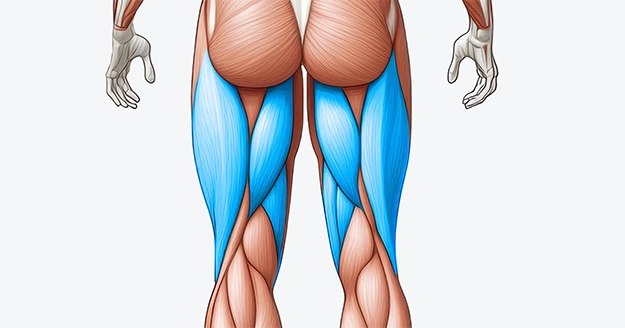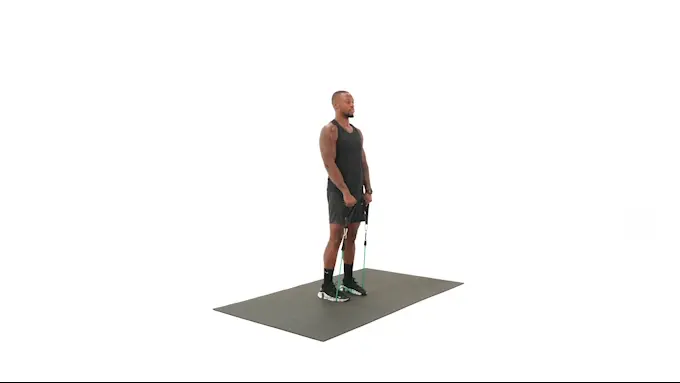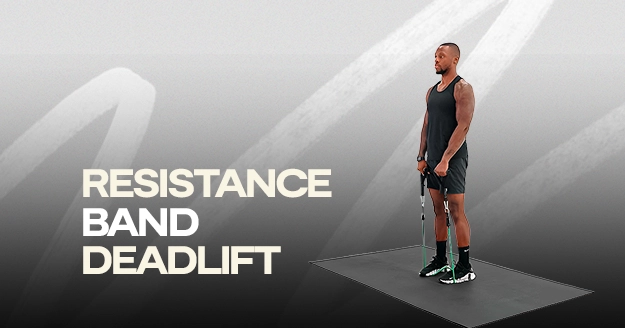Exercise Profile
Resistance Band Deadlift Overview
The resistance band deadlift is a highly adaptable exercise that focuses on strengthening the posterior chain, which includes key muscle groups such as the glutes, hamstrings, and lower back.
It’s an ideal choice for at-home workouts, outdoor sessions, or when traveling. Plus, bands can be easily adjusted to suit any fitness level by changing their resistance or combining multiple bands for added challenge.
Whether you’re an experienced lifter seeking variety or a fitness enthusiast building a balanced routine, the resistance band deadlift is a valuable addition to any workout program.

Resistance Band Deadlift Instructions
Step 1: Grab both handles with the palms of each hand facing your body. Stand with your feet hip-width apart and step on the middle of the band with your toes pointing forward.
Step 2: While bending your knees, hinge your upper body forward and push your hips back. Keep a flat back as you contract your core and glutes.
Step 3: As you return to an upright position, exhale and thrust your hips and glutes forward while pressing through your heels. Keep your shoulder blades engaged.
Step 4: Pause briefly, then inhale as you bend your knees and waist, allowing the resistance band to pull you down to start the next repetition.

Common Resistance Band Deadlift Variations
Several resistance band deadlift variations can be incorporated into your training routine to target different aspects of strength, mobility, and coordination. Here are some common variations:
Resistance Band Deadlift Tips
- Keep your chest up, shoulders back, and spine neutral throughout the movement to prevent strain on your lower back.
- Hinge at your hips, not your waist, to properly target the glutes and hamstrings.
- To keep your balance and maintain an optimal spine position, engage your core before starting the exercise.
Resistance Band Deadlift Common Mistakes
- Not Maintaining Tension: Allowing the band to go slack at any point in the movement reduces the challenge and effectiveness of the exercise.
- Lifting Too Quickly: Moving too fast can result in momentum taking over, reducing muscle engagement.
- Incorrect Band Placement: Not securing the band properly under your feet can cause uneven resistance, making the exercise less effective.
Frequently Asked Questions
Can I use the resistance band deadlift for strength training?
Yes, the resistance band deadlift can be used to build strength, especially for the lockout portion of the movement. While it may not replace barbell deadlifts for maximal strength, it is an excellent accessory movement for targeting the posterior chain and improving weak points.
What resistance band should I use for deadlifts?
If you’re just starting out, begin with a light or medium band. Switch to a heavier band as you get stronger, but make sure it doesn’t affect your form.
What distinguishes the resistance band deadlift from a standard deadlift?
The key difference is that the resistance band deadlift provides variable resistance, with more tension as the band stretches. This increases resistance at the top of the lift, helping to strengthen the lockout phase.
Post your post-workout selfies in IG and tag @trainestapp, #trainest, or DM them to us to get a shoutout on Trainest Stories!



